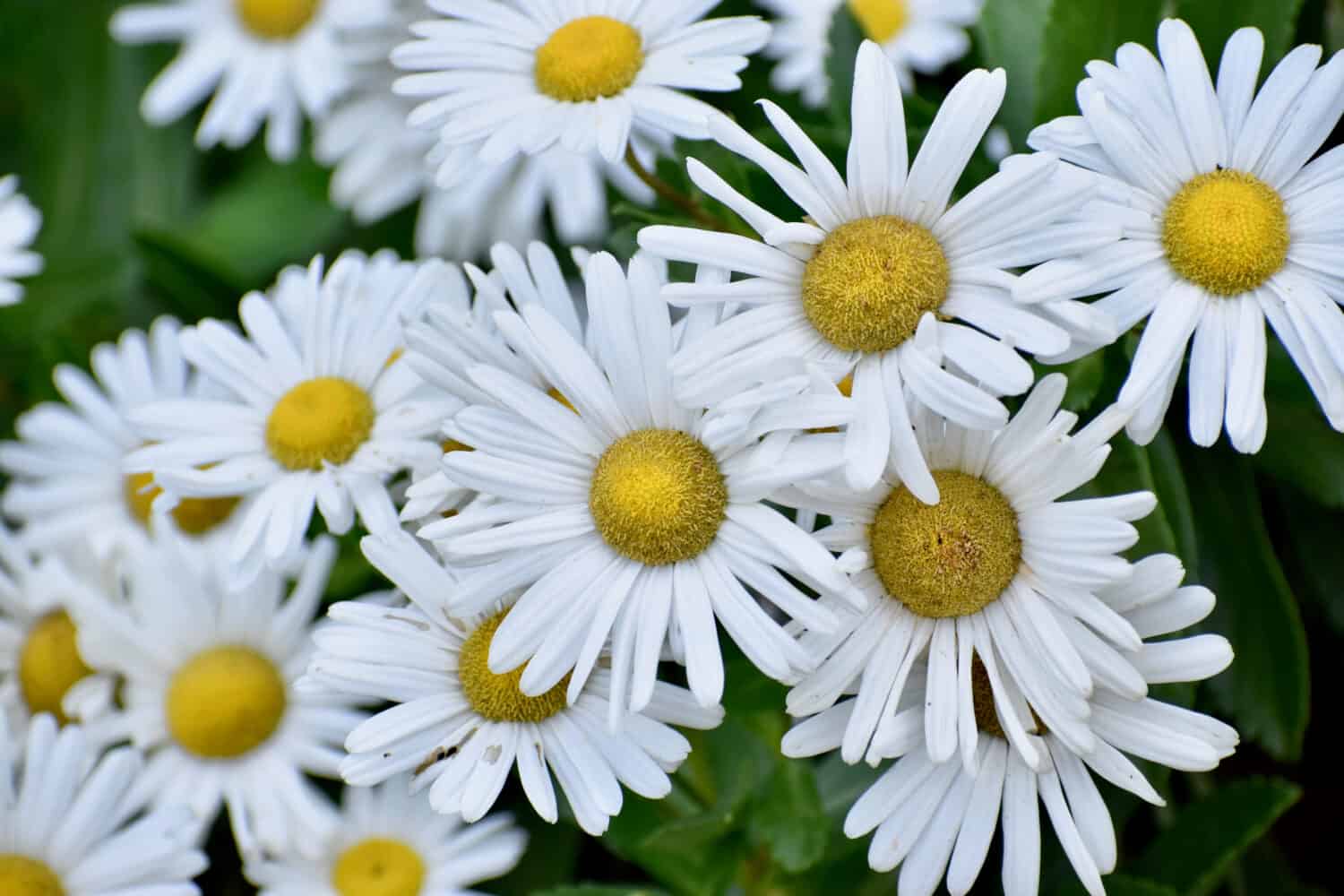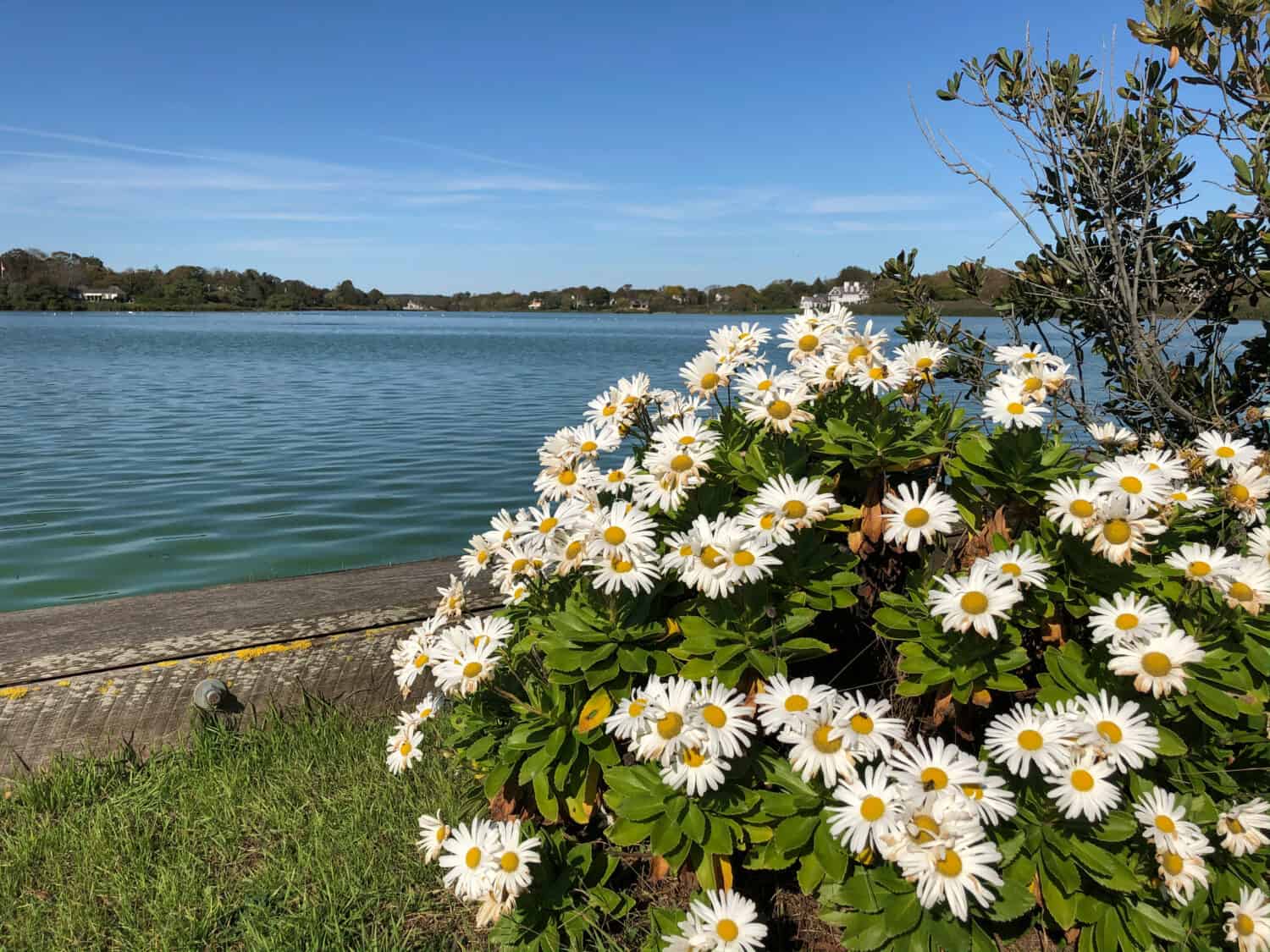While there are thousands of types of daisies, Montauk daisy plants are a fan favorite among gardeners. These hardy perennials are the perfect balance between wild and refined, adding a charming touch to any landscape. In this article, we’ll cover everything you need to know about Montauk daisy plants to help them thrive in your garden.
Let’s dig in!
Montauk Daisy Plants: History
Montauk daisy plants, also known as Nipponanthemum nipponicum or Nippon daisies, originally hail from Japan. Botanists believe these charming flowers were introduced to North America by early settlers as ornamental plants.
One of the reasons Montauk daisies have thrived in North America is their affinity for coastal regions. They are particularly well-suited to the North East United States, where they have naturalized and become a beloved part of the landscape. Along the coast, where these plants flourish, locals in the Long Island town of Montauk noticed their abundance and named them Montauk daisies.
While Montauk daisies grow and thrive in North America, they don’t have concerning spreading habits and aren’t considered invasive. While they can spread and naturalize in suitable environments, they do not pose a significant threat to native plant populations or ecological balance.
The adaptation and naturalization of Montauk daisies in North America is a testament to their hardiness and ability to thrive in various conditions. They have become a beloved and iconic flower in the region, capturing the essence of coastal beauty and contributing to the local horticultural heritage.
Montauk daisy plants were once believed to have medical properties and were used in teas and tinctures to relieve common colds and ailments. Daisies are still used in herbal teas today. However, it’s important to follow the advice of a medical professional rather than take a DIY approach.

The beloved Montauk daisy plant grows in clumps.
©Christina Duarte/Shutterstock.com
Montauk Daisy Plants: Characteristics
Montauk daisy plants are tall, herbaceous perennials that reach up to three feet high at maturation.
These beloved daisy plants have large, vibrant white flowers resembling cheerful sunbursts. These blooms boast numerous delicate petals surrounding a sunny yellow center that sometimes show notes of green, creating an eye-catching contrast against their dark green, glossy foliage.
Montauk Daisy Plants: Cultivation and Care
These sun-loving blooms perform best in USDA zones 5-9 and prefer well-draining, sandy soil.
Montauk daisies are low-maintenance, only requiring watering during drought periods. Water your Montauk daisies weekly if you live in an area that doesn’t experience weekly rainfall. Avoid watering during peak sunlight hours to avoid shock.
Propagation is the best method for planting Montauk daisies. Dig a hole to fit the root clump of divided Montauk daisy plants comfortably, and cover it with soil. Consider deadheading and pruning your Montauk daisies to encourage continual growth throughout the season.
As these quick naturalizers grow and spread well, consider dividing them every two or three years. Plant your propagates in another spot in the garden, or give them to a friend as a cheerful gift!
Montauk Daisy Plants: Uses
Montauk daisy plants are low-maintenance and versatile flowers. Here are some inspiring ideas for how to use these plants in your landscaping.

Long Island is the best place to see Montauk daisy plants.
©Joe Trentacosti/Shutterstock.com
Borders and Privacy
Montauk daisy plants make an excellent border along ditches and fences, adding visual interest and curb appeal. As these plants spread and grow relatively tall, they can add privacy to an outdoor sitting area.
Attracting Pollinators
Bumblebees and butterflies love Montauk daisies! Add these plants to your yard to support the local ecosystem and encourage biodiversity in your area.
Erosion Control
Montauk daisies have a strong root system. This feature makes them ideal for slopes and edges to help with erosion control. This perennial returns every year and can help stabilize the soil in otherwise unstable areas. As these plants prefer well-draining soil, they thrive on slopes.
Ground Cover
Montauk daisies also make an exceptional ground cover on slopes and other difficult areas to mow. Due to their spreading growth habit and ability to form dense mats, Montauk daisies effectively cover the ground and suppress weed growth.
Cut Flower Arrangements
Montauk daisies make excellent cut flowers due to their long-lasting blooms. You can harvest Montauk daisies and use them in floral arrangements, bouquets, or single stems in vases, bringing a touch of elegance and freshness indoors.
Potted Arrangements
Montauk daisies will grow and flourish in pots. However, this approach requires one key difference in care.
As the soil will dry quicker than the ground, it’s important to water your daisies once or twice per week. Stick your finger in the soil to the first knuckle. If it’s dry, it’s time to water your plant.
Soil drainage is another important consideration for potted Montauk daisies. Ensure you have well-draining soil with holes at the bottom of your pot to prevent waterlogging.
Thank you for reading! Have some feedback for us? Contact the AZ Animals editorial team.







